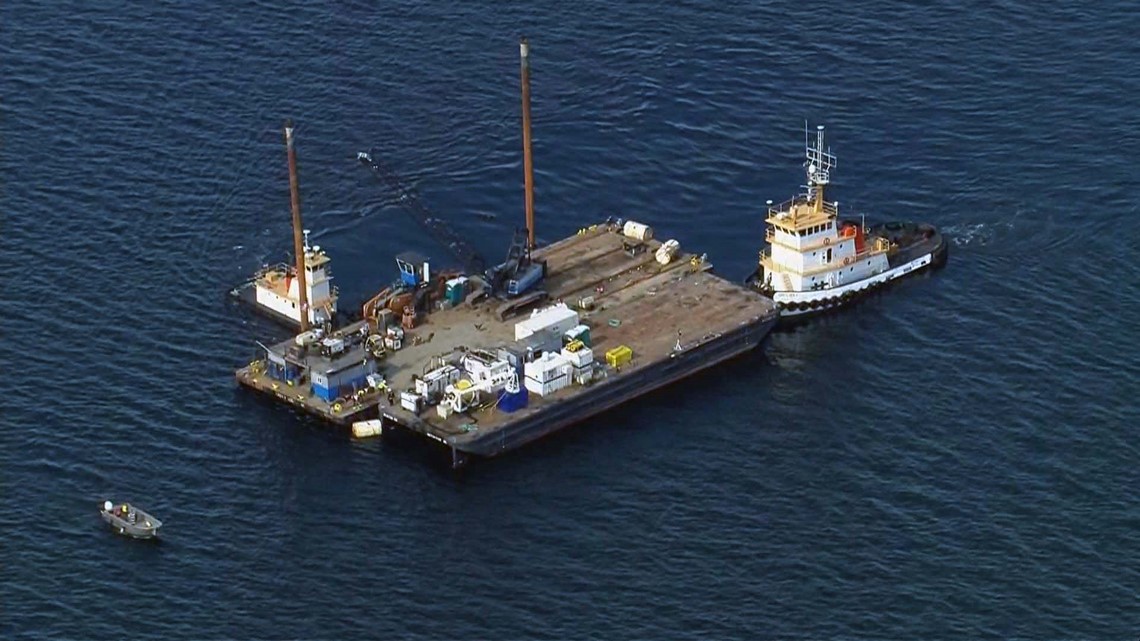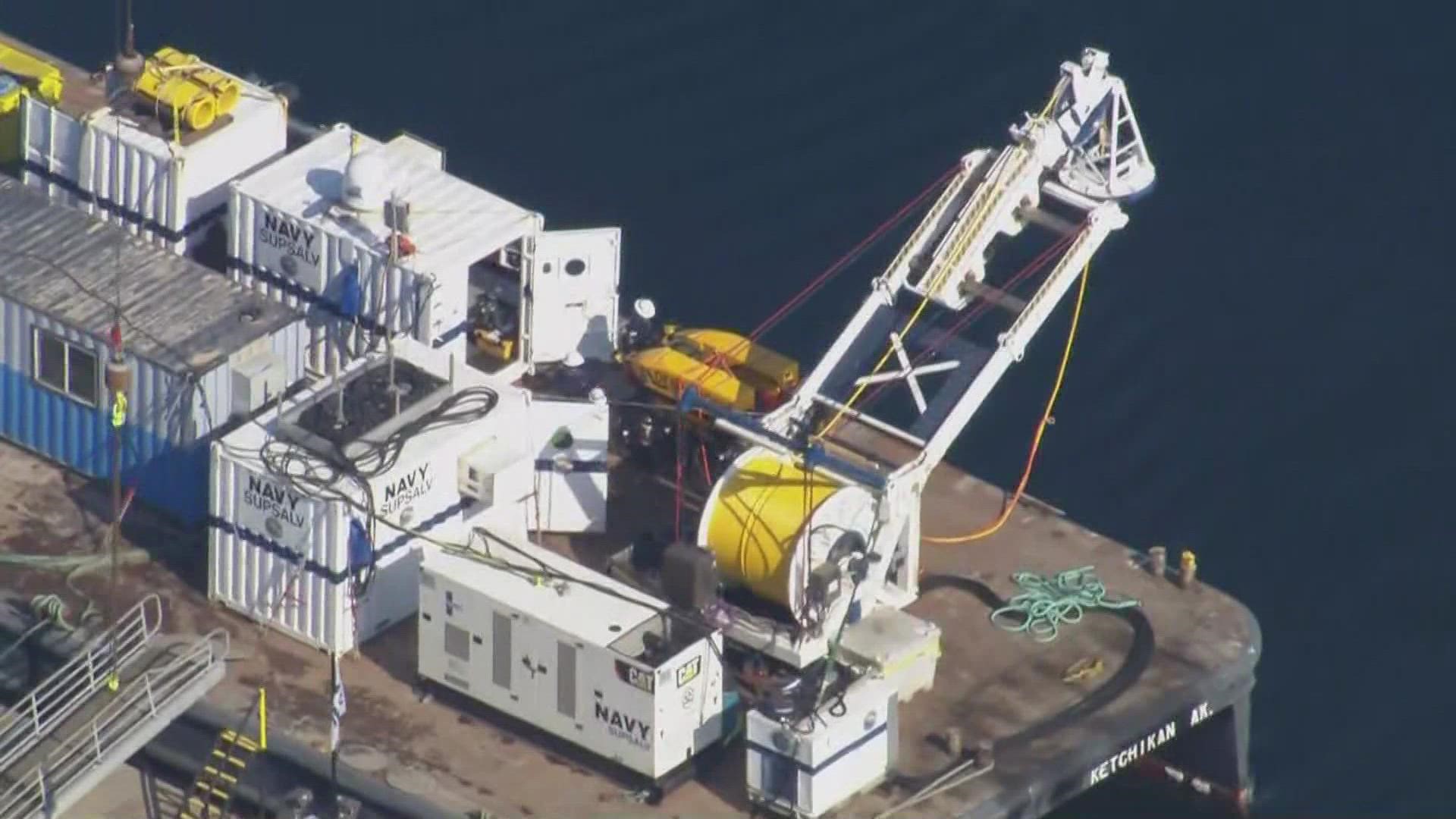WHIDBEY ISLAND STATION, Wash. — The National Transportation Safety Board (NTSB), U.S. Navy and Island County personnel began recovery operations Tuesday morning for the wreckage of the DHC-3 Turbine Otter that crashed near Whidbey Island on Sept. 4.
The team will be conducting work in 12-hour shifts around the clock.
The two barges for the operations moved into position on Monday and anchored in proximity to the aircraft wreckage. One is outfitted with a crane which will be used in the lifting operation and the other barge holds the remotely operated vehicle (ROV).


According to the NTSB, once the ROV confirms the wreckage, a survey of the site will be conducted. The survey’s focus is to visualize the wreckage and document its condition and position.
After the site is assessed, the team will decide how best to lift it out of the water based on the condition of the wreckage. The lifting process may be a direct lift by attaching cables to the wreckage and raising it to the barge with a crane or the ROV will be used to place smaller sections of the wreckage into baskets to be lifted.
The Deep Drone 8000 ROV has two arms and video cameras and is equipped with sonar and lighting systems. The ROV requires a team of four specialists to operate the equipment.
Chuck McGuire is the Senior Principal Engineer for UW’s Applied Physics Lab and an expert ROV operator who has recovered planes previously with the US Navy.
“They want to do this in one shot, get it right and make sure they’re lifting from non-compromised components and get that airframe and the wings and as much as possible, as intact as possible up onto the barge,” McGuire said.
McGuire said the important part is the air to sea interface.
“They have to carefully let the water drain from the air frame because any water left inside the airframe will increase the overall weight of the lifts,” McGuire said.
This means it will be a slow process while also being respectful of those that may still be in the airplane. Nine people, a toddler and unborn child were in the floatplane when it crashed, only one person has been recovered.
Some items from the airplane have already been recovered, according to the NTSB, including foam fragments from the plane's floats, a seat cushion, a seat belt, dispatch paperwork, flooring structure remnants and some personal items from the victims.

